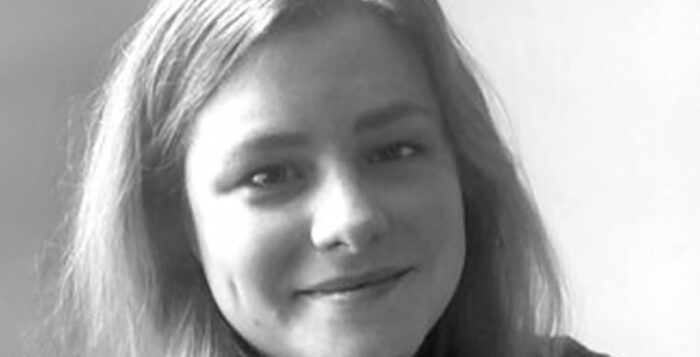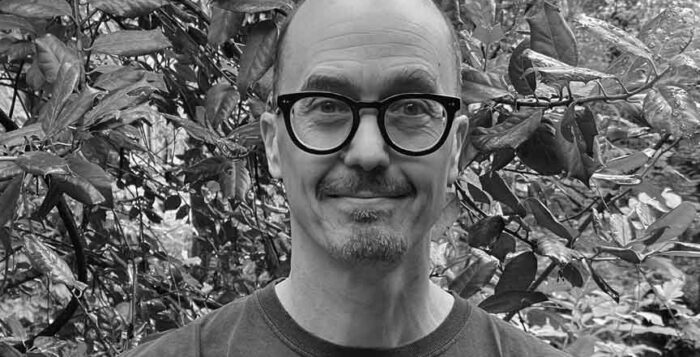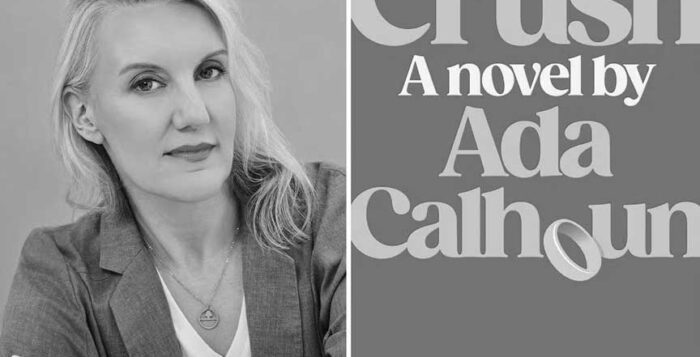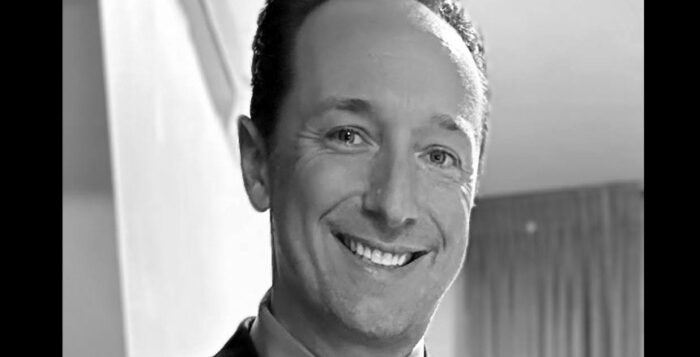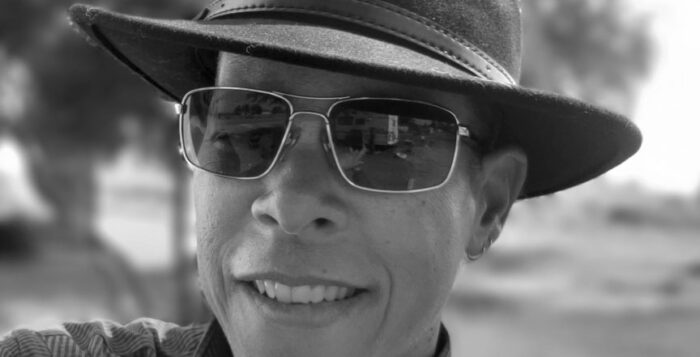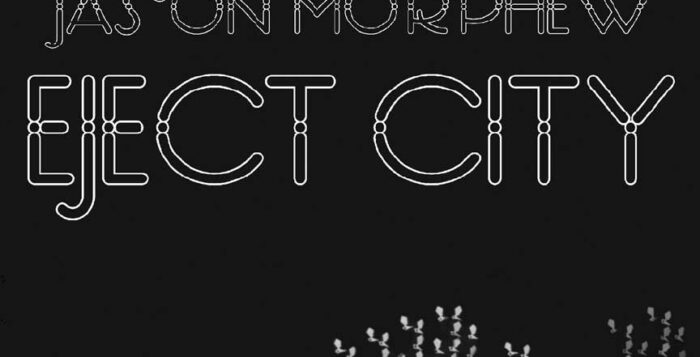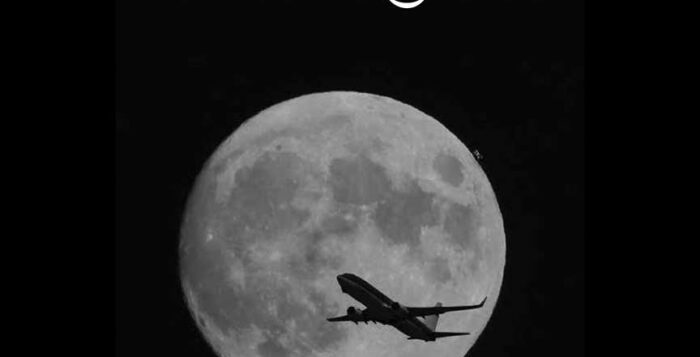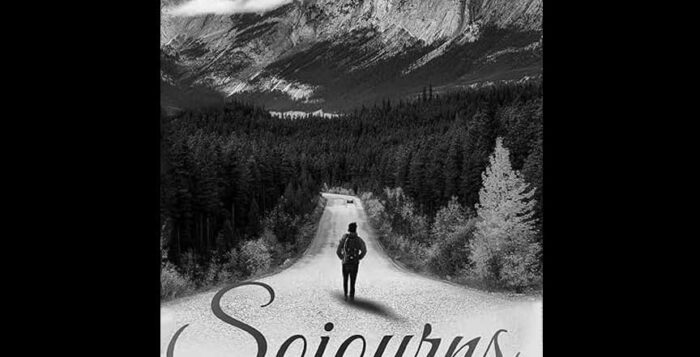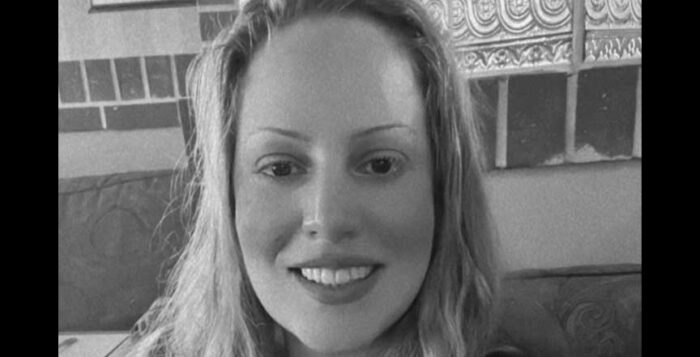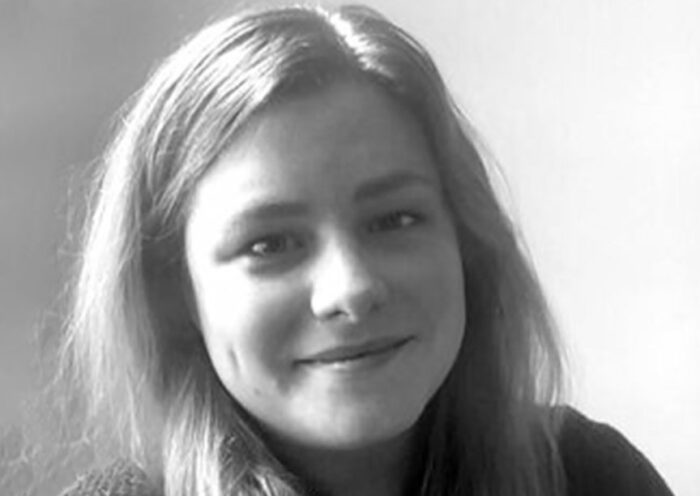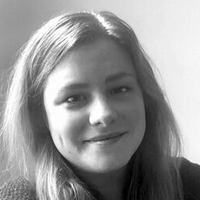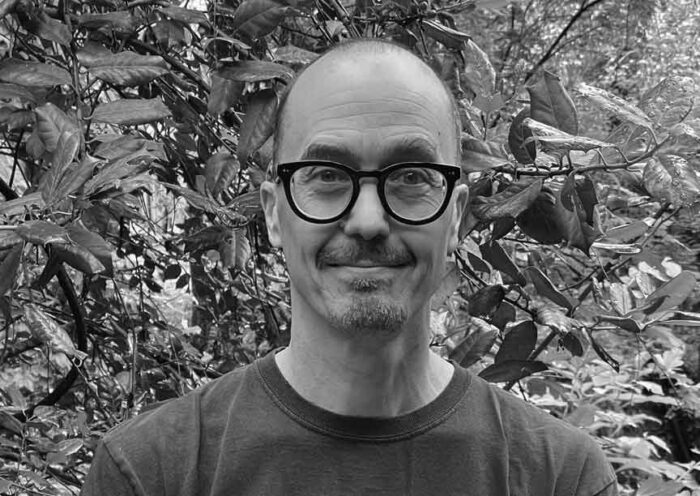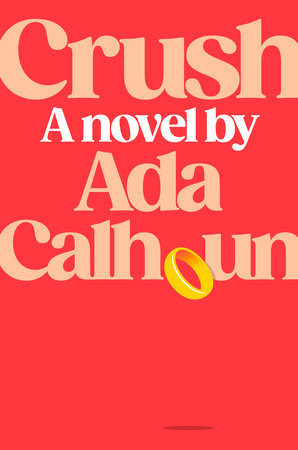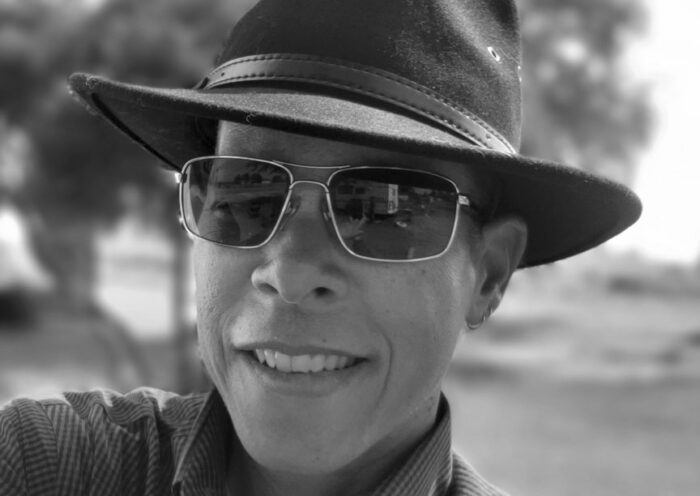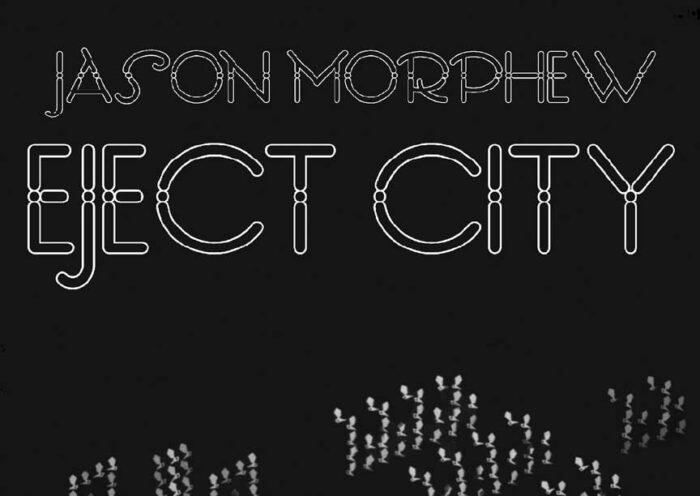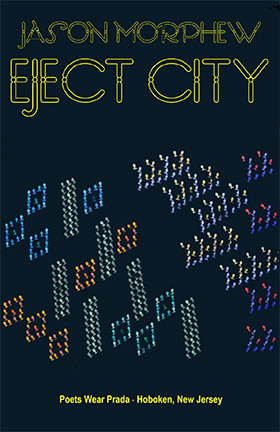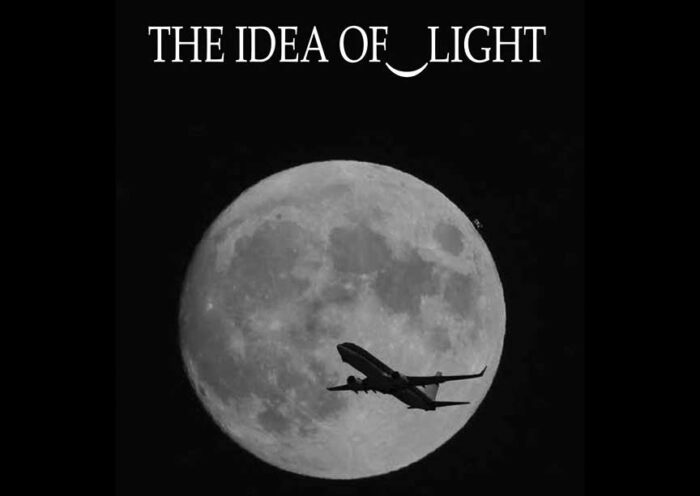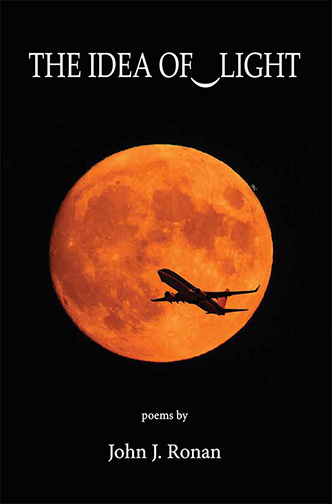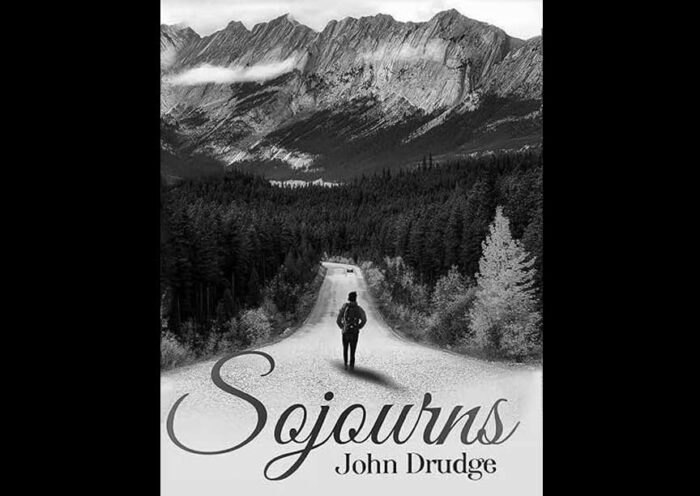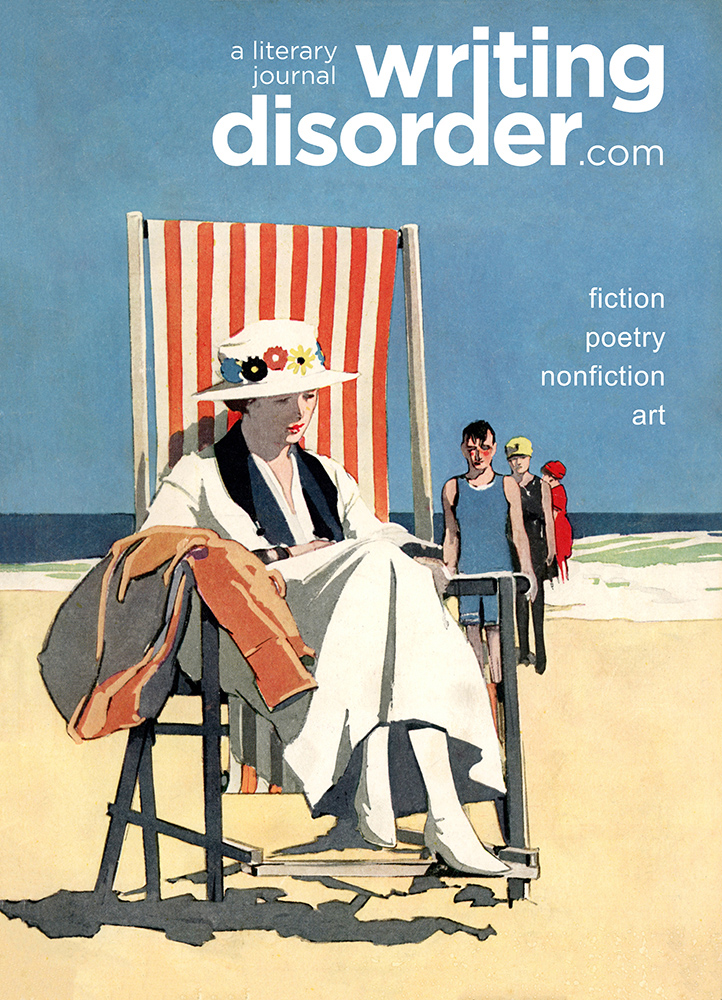Alguien voló sobre el nido del cuco:
Or, How I Spent My Summer Vacation
by Caitlin Garvey
“She only speaks Spanish, but she’s friendly,” the case manager says, leaving me with my first roommate, Maria. I wake up to her brushing my hair.
She wants to chat.
My Spanish is garbage, so she fills in the blanks with gestures. First, her age—”treinta y dos,” she says, holding up three fingers, then two. Then how she got here: “¡Colombia!” she beams, turning her forearm into a jet, adding a soft whoosh. She shows me her paperback—Sisterhood of the Traveling Pants, in English—and flips through it like a catalog, flashing a thumbs-up.
“Ah, sí, sí.” I smile, fake a yawn, and roll over.
She doesn’t take the hint. She takes my hair instead—grabs a fistful at the scalp and yanks.
My shoulder hits the floor first, then my knees. I scream as she drags me toward the common room. A couple patients glance up, then look away–the breakfast tray line has started.
Eventually, she just lets go. I lie there a moment, catching my breath. Then I stand, straighten my gown, and approach the case manager. “I’m so sorry to bother you,” I whisper. “But is it possible to get a new roommate?”
She doesn’t answer—just jots something down on her clipboard.
The ward bears familiar signs of institutional decay—long hallways lined with identical doors, air thick with bleach and body odor. Someone has tried to brighten it up with a motivational poster of a kitten hanging from a tree branch: “Hang in there!” But the kitten looks exhausted, like it’s been hanging for years.
At the patient payphone, I leave a weepy voicemail for my dad, begging him to bust me out. “I’ve been beaten up!” I whimper. But whenever calls come in, Maria’s already at the receiver, something inside her head snapping to attention. “¿Qué?” she mutters, then abandons it. The phone swings on its cord, hypnotic.
The day moves on. I lower my expectations to floor-level: keep my hair attached to my scalp, don’t die.
Dinner is gray tuna casserole, scooped onto a slice of wheat bread. When I scan the common room for a place to sit, a man with wild eyes pats his lap and grins. I retreat to my room with my tray, even though it’s against the rules. Mouse problem.
I eat slowly at the dresser, then bury the styrofoam deep beneath tissues and sanitary napkins. The mice will have to work for it.
Maria’s facedown on her bed, knocked out from a diazepam shot. She snores with her mouth open, breathing like a baby bird. I cry under the thin blanket, the mattress crunching with each turn. Then I shuffle back out in slip-ons two sizes too big–they slap against the floor like wet fish.
In the common room, bolted-down chairs circle an old box TV. The remote belongs to Angel, the longest-staying patient—here since COVID. We watch reruns: The Jamie Foxx Show, Moesha, Run’s House. Angel knows every episode. On-screen, Braxton pulls out a glove mid–Michael Jackson dance-off. “And a smoke machine?!” Jamie marvels, not realizing his kitchen’s on fire.
A nurse taps my shoulder. “Your room’s been reassigned,” she whispers.
___
I get moved in with Sheila, Steph, and Sam—four beds crammed into a space meant for two. The bathroom door doesn’t close all the way, and someone’s scratched HELP ME into the paint with what looks like a fingernail.
“Shit, or get off the pot,” Sheila barks from behind the flimsy door. Her voice is gravel. I see her bare feet under the crack, toenails long and yellow. I jump up, flush nothing. The toilet is ancient—stained, sticky-handled. I try the sink–broken. Just a wheeze.
“‘Bout fucking time,” she spits through the gaps where her incisors used to be, as I sneak past to my bed. “Some of us got places to be.”
Not me. I don’t have a patio pass yet. Time doesn’t move; it congeals. The Weekly Schedule is more suggestion than structure. Group therapy happens sometimes. Journaling, if they remember the key.
The ceiling light buzzes. I lie there counting–one-one-thousand, two-one-thousand, three. The AC’s broken; I sweat through my shirt by noon. The heat makes everything smell worse: disinfectant, dirty feet, something faintly sweet and rotting. In the corner, something scurries—quick, deliberate. When I look, nothing.
My sister Meaghan finally gets through. She’s been researching my release since reading the Yelp reviews. Five stars! raves one. This place really helped us disappear our friend. But state law is stubborn, Meaghan says. Once you’re in, you’re in.
I beg the psychiatrist anyway. “You’ll get out when I say so,” he smirks. Then comes the diagnosis: bipolar II. “But I’ve never experienced mania,” I protest, thinking of my friend’s ex who painted murals in blood. He shrugs. Hypomania can be subtle: Doordash debt. A digital chess addiction. Buying burner numbers to contact people who’ve blocked you. “My advice?” he says. “Settle in. Learn the schedule. Be on time to groups. Smile. Be engaged.” Everything goes in your file. The more dings, the slower the discharge.
Medication dispensing happens twice a day, in a line that moves with the efficiency of the DMV. Tomas, the morning nurse, adds oxcarbazepine to the tiny paper cup.
I swallow, say aah.
___
The common room’s single clock died at 3:17. Morning arrives when the community meeting bell rings. Amanda stands near the dry-erase board, which still says GOODBYE LAUREN!! in smeared purple marker. She asks how we’re doing. “Okay.” “Tired.” “Still here.” Then the daily icebreaker: If you could be any fruit, what would you be?
“A peach,” says Sam, “because they bruise easy.” Everyone laughs too loud.
We each name a “goal for the day.” Participation goes in your chart. I say, “Shower.” Quentin whispers something I can’t catch, his voice thin and breathy: fentanyl falsetto. Amanda doesn’t ask him to repeat it.
She reminds us about room hygiene. “And please—no food in your rooms. The mice situation is ongoing.” She says it like we’re the problem. “They won’t bite unless they feel threatened.”
After twenty minutes, we’re released like schoolkids at recess.
Boredom sets in fast. My skin itches from withdrawal—of noise, screens, anything. I read the back of cereal boxes, the fine print on warning signs, the label on the soap packets: sodium lauryl sulfate, fragrance, water. Michael plays against himself in chess, but won’t let me join. “You’ll break my rhythm,” he mutters, without looking up.
I pluck at my chin hairs, hoping they’ve grown long enough to grip. I post up by the payphone. The other patients tease: “Got a hotline, girl? A little fan club?”
Eventually, the substance abuse counselor, Colleen, finds me. She’s young, her ID badge still shiny. As she leads me to a private room, we pass Warlord Eric—tall, graying, with an intense stare but gentle voice.
“Hi, beautiful Caitlin,” he says. He calls everyone beautiful, even Jim.
“Just ignore him,” Colleen mutters. “Some people get watched more than helped.”
The counseling room has a poster of a sunrise over mountains: Every day is a new beginning, in cursive. Someone’s drawn a tiny penis in the corner.
Colleen runs through the usual substance questions. When I say I smoke “three to four times a week,” she nods. “Based on the look on your face, I’m gonna write down seven.”
The verdict: Cannabis Use Disorder (CUD). Also: poor boundaries. She hands me a worksheet full of scenarios: saying no to your boss, turning down dates, refusing to lend your mom money, handling nosy relatives. “Don’t start with sorry,” she says, slashing my answer with red pen. “You’re allowed to have limits.” She leans back, clicks her pen. “I cut my mom off last year. Best thing I ever did.”
“What’d she do?” I ask, forgetting I’m the patient.
“She existed,” Colleen says. “Some people are just toxic, you know?”
___
Art therapy’s already started, and I can’t enter without an escort, so I have to ask a security guard to take me. He’s older, walks with a slight limp, radio clipped to his belt. He sighs, like it’s a hassle.
The door’s locked—fight. Someone screams from inside, high and sharp. He doesn’t flinch.
We wait. I fold my arms; he hums, tuneless.
“You been to a place like this before?” he asks, eventually.
“Once,” I say. “But a million years ago.”
He studies me for a beat. “You don’t seem like the typical patient.”
I shrug. A plastic cup rolls across the floor. “Mind if I ask how you ended up here?”
I consider not answering. “I took some pills,” I say.
He nods, lets the silence settle. “Well,” he says. “Still here, huh. That’s something.”
Art therapy is run by a white woman with feather earrings who blasts Lil Wayne. “This one goes hard!” she shouts, turning it up. Her lanyard jingles with cartoon keychains—SpongeBob, Hello Kitty, a tiny rubber chicken—and she deals out art supplies like playing cards.
For forty-five minutes, we’re allowed to touch the colored pencils. Some patients shade in the bubble letters of motivational signs that say You Are Your Only Limit or Good Things Take Time. Warlord Eric uses a red Sharpie to draft a petition to invade Argentina. He cites reasons like humanitarian concerns, strategic value, and communist threat in careful script.
“Does the Vatican have ships?” I ask him, sheepishly, before signing.
He nods, serious. “The Vatican has everything. They just don’t advertise.”
I pick geometric patterns, the shapes already outlined. All I have to do is stay inside the lines, a repetition that quiets my brain.
My hands tremble from the meds. I press too hard, snap the pencil tip.
When the lunch buzzer sounds, we drop everything like Pavlov’s dogs. I pick at deconstructed burrito filling while the new guy insists he’s here by mistake.
“Must have been a big misunderstanding,” Michael mumbles through a mouthful of rice.
“No, for real, man,” the new guy pleads, eyes darting. “I have responsibilities. A job. A girlfriend. A whole-ass life.” A few of us shrug, keep eating. “Man, fuck this shit!” He swipes the air. Beans and meat fly.
Later, in CBT, Dr. Jock explains the acronym again. He’s short, pale, with capped teeth and an underbite. “Your thoughts aren’t you,” he says, handing out worksheets still warm from the copier. He scribbles on the whiteboard with a squeaky marker: distorted thinking, emotional reasoning, behavioral activation.
The worksheet wants problems, thought distortions, knowledge gaps. I fill it in by muscle memory: Depressed mood. Avoidance. Disconnection. There’s a scratching in the corner.
Maria flashes the room. “Oh my God,” Dr. Jock shrieks, “¡Dónde está tu… how do you say shirt?” He covers his eyes with his clipboard.
The security guard reappears, draping Maria in a blanket and walking her out. She’s laughing, rapid-fire Spanish spilling from her mouth. Dr. Jock taps the marker, waiting for order to resume. I sit still, watching a mouse scuttle along the baseboard. It freezes, held at the hush between going and not-going.
___
At dinner—something they call “fiesta salad,” which is iceberg lettuce, canned corn, and mystery meat—the night nurse, Nidhi, pricks my finger without warning and hands me sugar-free salad dressing. I remind her I’m not diabetic—I take metformin for PCOS.
“Your blood sugar’s great!” she chirps. “Doin’ great, girl.”
Steph, who’s been here a month, warns me: “That stuff’ll strip the paint off a car.”
We barter like inmates: I give her my pears with cottage cheese; she slips me club crackers during snack. Her fingers are quick, practiced. She used to braid hair in jail. “Fifty cents a head, unless you were cute. Then I’d do it for free.”
Later, I try to shower but forget the sign-up sheet. “She’s breaking the fucking rules!” Sheila screeches, jabbing a finger at me.
Nidhi gives me a speech about structure and Sheila something that knocks her out. She snores like she’s still arguing.
I still smell—couldn’t open the soap packets, even with my teeth.
Someone on the men’s side is screaming when I ask Nidhi for something to help me sleep. “Nothing surprises me anymore,” she says, nodding toward the scream. She gives me Xanax and Benadryl—two of the drugs I binged when I didn’t plan on waking up. Now it’s meant to treat.
On the payphone, I call my ex-wife for the first time since the divorce. Voicemail. “I’m in the hospital,” I whisper, cupping my hand around the receiver. “You’re one of the only numbers I remember. Just thought you should know.”
There’s still static under my skin. The medication dulls the edges, but sleep feels borrowed, thin. I dream, but nothing sticks.
___
“How’s the medication treating you?” Tomas asks—another test, another chance for a ding in my file.
“Better,” I lie. I learn to swallow without water.
At community meeting, we perform progress. One by one, we announce our wholesome intentions. Amanda writes them down: gratitude, exercise, mindfulness. She smiles and unveils a box of chocolates. “Treat time!”
Mid-celebration, she checks the label. “Wait—Quentin’s allergic.” She tucks the box away like it never existed. “Just erring on the safe side,” she says.
My stomach growls. I’ve skipped the last few meals. Instead of “I’m not picky,” I should’ve said: I won’t eat beef stroganoff, their version of sweet-and-sour chicken, or sloppy joes on wheat bread. I’ve lost weight, I think. The scale’s not accurate.
Meaghan visits and comments on my greasy hair. “And your apartment…” she trails off. “A whole ecosystem is growing in your kitchen sink.” She covered her nose but cleaned it anyway—a fresh start for my return—and fed the cats.
She asks about the food, and I forget the word for carton. “It’s not a glass…”
“What are they giving you here?” she whispers.
“Watch your feet,” I warn as we hug goodbye, glancing at the baseboard. “Mouse.”
In the visiting room’s mini library–three shelves of donated books, mostly religious or self-help–I pick up Dorothy Allison’s Cavedweller because of its opening line: Death changes everything. Someone’s Sharpied “BE CAREFUL CRAZY” on page sixteen, the handwriting shaky and urgent. I’m allowed a pen but have to return it immediately. I trace the letters, wondering whose warning this was.
“Do people not get visitors often?” I ask Steph later.
“Not really,” she says. “Michael’s brother came once. Brought McDonald’s. He wouldn’t shut up about the fries.”
To get out, someone has to pick you up. And want you back.
“Most families don’t want the mess.”
___
I get to go outside now—I’m one of the Patio People.
The outdoor area is a caged square, six paces wide, ten long. Chain-link walls, a cracked bench. Steph walks laps along the edge, her path worn smooth by repetition. “We used to call this the Bird Cage,” she says. “Back in Cook County.” I look up at the sky until my neck hurts.
Then the ceiling again. Back in bed, I clutch Cavedweller, crying so hard the words blur into abstract shapes. When my eyes clear, I underline: “Life sweeps you away like a piss river.” Allison’s characters are flawed: impulsive, vindictive, stubborn. Still, she lets them want things. I haven’t returned the pen.
Steph’s on day three in the same pants. Amanda scolds her in front of everyone. “Fix it. Now.”
“But the dryer’s broken.”
“Then hand wash.”
“Sink’s broken too.”
Amanda sighs, makes a note. The scolding ends, and we shuffle to lunch—black-bean burgers too crumbly to hold. Fries, bone-white.
Across the room, the door to Julia’s private room is cracked open. I can see her sitting on the edge of her bed, perfectly still, staring at the wall. “What’s her deal?” I ask Sam.
“She used to be my roommate,” she says. “We were close.” They even named a mouse together–Pip–and left it crackers.
Julia came in after trying to drive into the lake. But the lake was frozen—she just got stuck in the snow, spinning her wheels for twenty minutes until a jogger called 911. She was supposed to be short-term, but kept getting worse. Stopped talking. Started slipping away. Then one morning, she punched out their window with her bare hand, just stood there watching the blood run down her arm. Ever since, she’s been on 1:1. They’ve kept her in view, but she doesn’t speak.
I slide my juice across the table to Julio. He has a black eye, the purple spreading to his cheekbone, and he doesn’t speak either, but he nods. Later, he gives me four oranges he’s been saving, wrapped in napkins. I tell him to keep them. He presses them into my palm anyway.
Maria doesn’t barter. She hoards. I sit behind her while Moesha plays and watch her stuff crackers down her bra. “Qué loca,” she says, laughing at a sad scene.
That night, Sam shows us the scars on her forearms—neat and parallel, like a barcode. “I used to think it was the only thing I could control,” she says. “Everything else was chaos. But this, I could decide.” She runs her fingers over them like Braille.
Sam’s been here four years, just shy of Angel. Her mom won’t take her home—two siblings have special needs. “She’s scared I’ll set them off,” Sam says. “Like I’m contagious.” She turned twenty-one here—ordered pizza for the ward with her SSI check, but had a seizure and missed her own party.
On the plus side, she says, she gets headphone privileges now. She listens to the radio before bed, Chappell Roan’s “Pink Pony Club” leaking out:
Won’t make my mama proud /
It’s gonna cause a scene /
She sees her baby girl /
I know she’s gonna scream.
God, what have you done?
___
Michael leaves on day five. His name gets called during morning meds. He doesn’t smile, doesn’t say goodbye, just nods like he knew it was coming. We watch him pack his nothing into a plastic bag. “Stay strong,” he says, but his eyes are already gone.
The morning icebreaker: “What’s one thing you can’t live without?” A social worker says “my phone.” This triggers the new guy, who screams, runs behind the desk, and swipes everything off: Kool-Aid pitcher, paper tray, laminated rights list. He’s tackled gently. The Kool-Aid pitcher doesn’t break—it’s plastic, built for this.
Breakfast is rubbery pancakes and a hashbrown patty. No forks. Watery decaf in a Styrofoam cup. We tear the pancakes with our hands like animals. Sugar-free syrup pools in my tray, warm and sticky. Sheila steals Steph’s coffee while she’s distracted.
The doctor finally shows up, working his way around the table. He whispers questions but starts writing before we answer. “Your mood seems more stable,” he tells me. “The medication is working.”
He leans toward Steph. “Still having those suicidal thoughts?” The whole table hears. “All good,” she says, without blinking, and rips her sandwich in half with her teeth.
Hours later, after medication and lights-out warnings, Steph sits cross-legged on the floor and tilts her head toward me.
“Can you help?” she asks, pointing to a knot so tight it looks like a tumor.
I sit behind her and work slowly, threading my clumsy fingers through her thick curls.
“My daughter used to do this for me,” she says softly. “Before they took her away.”
When I pull too hard, she flinches, then smiles. “You can’t hurt me.”
The knot loosens. Her hair spills free.
We sit in silence, but it’s not awkward. Something about the four of us, packed into this small room, has started to feel familiar, even safe. We orbit each other now, strangely in sync. We nap at the same time, take turns at the sink, tolerate each other’s snores. We gripe about the heat, the food, the useless staff.
Out of nowhere, Sheila blurts, “I’ve been with female partners before.” She has Tourette’s, so sometimes things just fly out.
She looks startled, like the sentence escaped her by mistake—but we roll with it. “Same,” I offer. Sam says she’s still figuring it out. She hasn’t been with anyone yet. Steph says she’s straight but done with men forever. As a working girl, she’s seen the worst: the client who wanted her to wear his dead wife’s wedding dress, another who paid extra to call her “Mommy.” One who asked her to defecate on his face.
“People are disgusting,” she says.
Sheila mutters, “I’m desperate for female friendship.”
The door creaks open. We all tense.
“Tell that Spanish girl to get the fuck out!” Sheila hollers. Maria’s supposed to be on 1:1, but they’re short-staffed.
“Just me,” a security guard stammers. Face Check. His flashlight moves over each bed, cataloging our continued existence. He apologizes for the intrusion.
“Marlboro cigarette,” Sheila grunts after the door clicks shut. “Could really go for one right now.”
Sheila counts her invisible pack. Her fingers tap against her thigh—one, two, three, four. We all watch.
“Mmhm,” we murmur, a mutual yearning. Then we sleep.
___
“Are the phones down again?” I ask Amanda.
“Yes,” Warlord Eric answers instead, suddenly appearing at my elbow. “I can’t get through to the FBI.”
Amanda confirms the phones are down but tries to reframe it. “Feel the AC?” she offers. “They fixed it.” I feel nothing.
The new guy is pacing the hallway in socked feet. He’s been here three days and talks in loops. “I just had a bad day,” he says to no one in particular. “Everyone has bad days.”
Then it’s visiting hours. My sister Sarah shows up in a face mask, hands folded like a mediator. We talk about the rift, what it’s like to grieve someone who isn’t dead. She asks what my plan is for when I get out. “What I mean is…” she hesitates. “How can we be sure this won’t happen again?” She says it gently, but I flinch. I say something vague about structure, medication, support systems. Forty-five minutes in, a nurse calls time.
Later, after Sarah leaves, Colleen finds me loitering by the laundry closet. She nudges me into a private room, same as before. I tell her I didn’t say sorry when asking for medication. “I even asked for help with the soap packet.”
“Well, there ya go,” she says. “Baby steps!”
We talk about relationships, patterns, routines. The pull of the familiar. She draws a triangle: my ex, my mother, me. “You mistake the outline for safety,” she says.
“At some point,” she adds, “it stops being about what happened to you. It becomes about what you keep walking toward.”
Afterward, I linger in the common room. Run’s House is on again, Rev doling out fatherly wisdom. Maria takes the spot beside me without speaking. She taps my arm, then lifts her shirt to reveal a tattoo across her ribcage.
“Diego,” she grunts, wagging her finger no. Her ex.
I pull off my sock and point to the faded signature on my ankle. “Mi madre,” I say. But I forget the word for dead, so I mime it: eyes closed, tongue out, slack jaw.
Maria shrieks. “¡Ay, Dios mío!” She crosses herself, kisses her fingers, touches them to the air, still laughing. Her reaction is so big, so alive, I can’t help it—I laugh too.
Before bed, we play cards. Someone has written “FUCK THIS PLACE” on the king of diamonds, and there are bite marks on the queen of clubs.
“Menos,” Maria says, slamming down a king. It takes me three rounds to realize highest wins, not lowest. She’s tricked me, but she smiles with her whole face. I let her have it.
Down the hall, a patient starts yelling. Maria drops her cards and disappears into the noise.
___
Steph and I blow off CBT with Dr. Jock. We lie there listening through the thin wall. “Their happiness makes me sick,” she says, and we laugh.
In art therapy, I color a tree orange, blue, and pink—small defiance. Sam folds medication inserts into cranes. Fold, crease, fold. A tiny army forms by the windowsill.
The art therapist spots a granola wrapper under the table. “Careful with crumbs,” she says, squatting to pick it up. “Mice can chew through drywall. Crazy strong teeth.”
Warlord Eric, without looking up from another petition, mutters, “That’s how they got into Watergate.”
By day eight, discharge planning begins. The occupational therapist, Theresa, has tired eyes and speaks slowly, like I’ve just learned English. Do I know how to cook? Pay bills? Shower? I nod. When I answer “English professor” to her question about employment, her posture softens visibly, her shoulders dropping. “That’s understandable,” she says to my subsequent answers, nodding more vigorously, like these credentials raise my stock.
When I mention not having many friends, she says, “That can happen as we get older. People drift.” She tells me she made most of hers at the dog park. “I have cats,” I reply.
“Well,” she shrugs, closing her folder. “It’s an idea.”
Later, I head to the common room expecting the usual routine, but Angel’s on 1:1 for trying to leave through a fire exit, so someone else has the remote. The nightly news flickers on: Tens of Thousands Flee Gaza City as Israel Issues New Forced Evacuation Orders. My chest tightens. I prefer the re-runs.
Warlord Eric wanders out barefoot, drawn to the screen. A nurse shouts from the medication station: “No, Eric. Turn around. You’re not allowed to watch the news, remember?”
She lowers the volume, but the ticker keeps scrolling. Silent catastrophe.
Maria pats the chair next to hers. She lifts her hands, mimics my pantomime: eyes closed, tongue out, limp groan. Then she laughs so hard she hiccups.
Eventually, my dad calls back. “Sorry, Caits. I got a new phone—still can’t figure out the voicemail.” But he figured out his wedding e-vites, he announces proudly. He tried calling earlier. “A crazy person answered.”
___
On discharge day, the doctor tries to stick EKG wires to my chest, but I’m too sweaty.
“My God,” he says, stepping back. “Is it really that hot in here?” He chuckles and waves down the hallway to no one. “I’ll nudge facilities to fix the A/C.”
I must have blacked out for a second because when I come to, my hand is curled around a juice box—apple, lukewarm. The doctor is still in the room, talking to a nurse. “She’s one of our best patients,” I hear him say. “Very compliant.”
A moment later, Steph crouches beside me and offers her Link card. “There’s money on it,” she says. Steph doesn’t expect to use it herself—she knows she’ll be here a while.
After morning meds, Amanda intercepts me by the nurse’s station, clipboard in hand. She shakes my hand—something I’ve never seen her do. “You have so much potential,” she says. “Don’t squash it.”
At the door, she turns and raises her arms like a conductor. She leads the others in a rendition of “Hit the Road, Jack.” And don’t you come back no more, they sing, but their voices lack conviction. Maria, grinning, sings something completely different, claps offbeat.
The night before, I tie off the garbage bag. It’s full of detritus: medication cups, tissues, club cracker wrappers. I hesitate before knotting it shut. One last scan of the room: the bed I never made, the towel stiff from drying nothing.
Something rustles inside—soft, persistent. I set it down gently.
I lie in bed listening. The sound becomes familiar, almost soothing. Then, after an hour, it stops.
I wait in the new silence, counting to stay calm. One-one-thousand, two-one-thousand, three.
Just before dawn: a squeak.
BIO
Caitlin Garvey is a writer and English professor in Chicago. She has an MFA in creative writing from Northwestern University, and her work has appeared in journals such as Post Road, The Baltimore Review, The Tishman Review, and Little Fiction|Big Truths. She is the author of The Mourning Report (Homebound Publications, 2020), a hybrid memoir that weaves personal loss with narrative portraits of those who cared for her mother in her final days.

